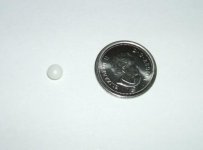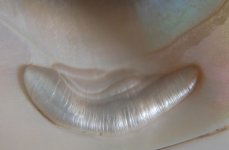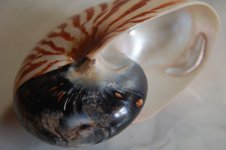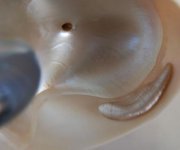Some clarification from Lagoon Pearls may be required:Thanks.
I'll try. Please correct me if I'm wrong, because I am neither a marine biologist nor a hematologist. However, I can give some background of my experiences.
In the early eighties, while I was a deepsea diver harvesting geoducks and red sea urchins, I had some involvement with an octopus study conducted by Simon Fraser University. The lead professor was Dr. E. Brian Hartwick, Associate Professor of Marine Ecology.
http://www.sfu.ca/biology/faculty/hartwick/
Although I never met Dr. Hartwick, I did live under the same roof as the biologists. The study was two fold in the study of the seasonal migration and growth rate of O. dofleini. Most days, the crew would embark the research vessel and proceed offshore from Tofino, BC, where long lines were strung with recycled tires. The animals were sexed, weighed, tagged and released.
Likewise, and area locally known as MacIntosh Rock, on the north west side of Vargas Island was designated as an octopus research area. During this period, harvesting of marine animals was prohibited in the area, to allow divers to capture and re-capture denned octopuses. On a few occasions, I was contracted to dive. The information gleaned from re-captures was valuable because it clearly demonstrated the rapid growth of these animals. A few animals were retained and observed, by giving them known weight and volumes of food and measuring the recovery/waste ratios. I could go on forever and a day about the intelligence of these animals, but let's get to the point of the quote.
I returned to the study area after the research concluded. I needed an octopus for a special occasion with friends. (You haven't lived until you've eaten my curried octopus) Almost immediately, I encountered an ideally sized specimen for my culinary exploit. I stuffed the animal into my goody bag, then collected a few sea urchins and some rock scallops in another bag, for a sushi presentation.
When I got home, I put the octopus in the sink to prepare. It was then I noticed the animal had not only one, but two missing legs. Right three and four were completely severed. There was also a noteable scar in the skin extending past the gill opening (about 4 inches) and into the mantle. While disecting it at the scar, my knife contacted the pearl. It was located roughly 3/4 of an inch from the end of the scar, at the mantle side. There were about a dozen visible circular lesions nearby, below, but within the skin. They were whiteish bumps, but did not contain pearls. They were soft masses.
The injury would have been near-fatal in this animal or even fatal in any other. It's likely the animal found shelter or inked itself to safety, not a moment too soon.
We all know, octopus are green blooded animals. The base atom being copper, as opposed to iron in vertibrates. Their blood contains hemocyanin, instead of hemoglobin in red blooded species. Blood vessels in the viscera of the octopus are innervated by nerve fibres containing catecholamines. This suggests that cephalopods, may be capable of regulating their peripheral vasculature by central neural control. Octopus are indeed visibly moody creatures, no less masters of deception.
The urine of the octopus, has been subjected to a qualitative analysis for different elements. Ammonium, calcium, magnesium, potassium, sodium, zinc, arsenate, bromide, chloride, fluoride, phosphate, and sulfate, are present in detectable amounts. Again, I'm no hematologist, but I do understand in humans, elevated numbers of cells such as erythrocytes (red) and leukocytes (white) are factored during inflammation. In cephalopds, the hemocyanin is dissolved in the plasma instead of being bound in red blood cells. Hence giving rise to more questions than answers when it comes to the immunology and regeneration of tissues in invertibrates. Unfortunately, the study did not involve experimental changes in blood chemistry resulting from trauma, which might have provided some answers to the question before us, this day.
Clearly, any environmental or physical stress or combination there of, can affect the blood acid-base balance in most creatures. This anomaly was likely a combination of multiple etiological factors. Far too many for a layperson like myself to explain with any certainty.




